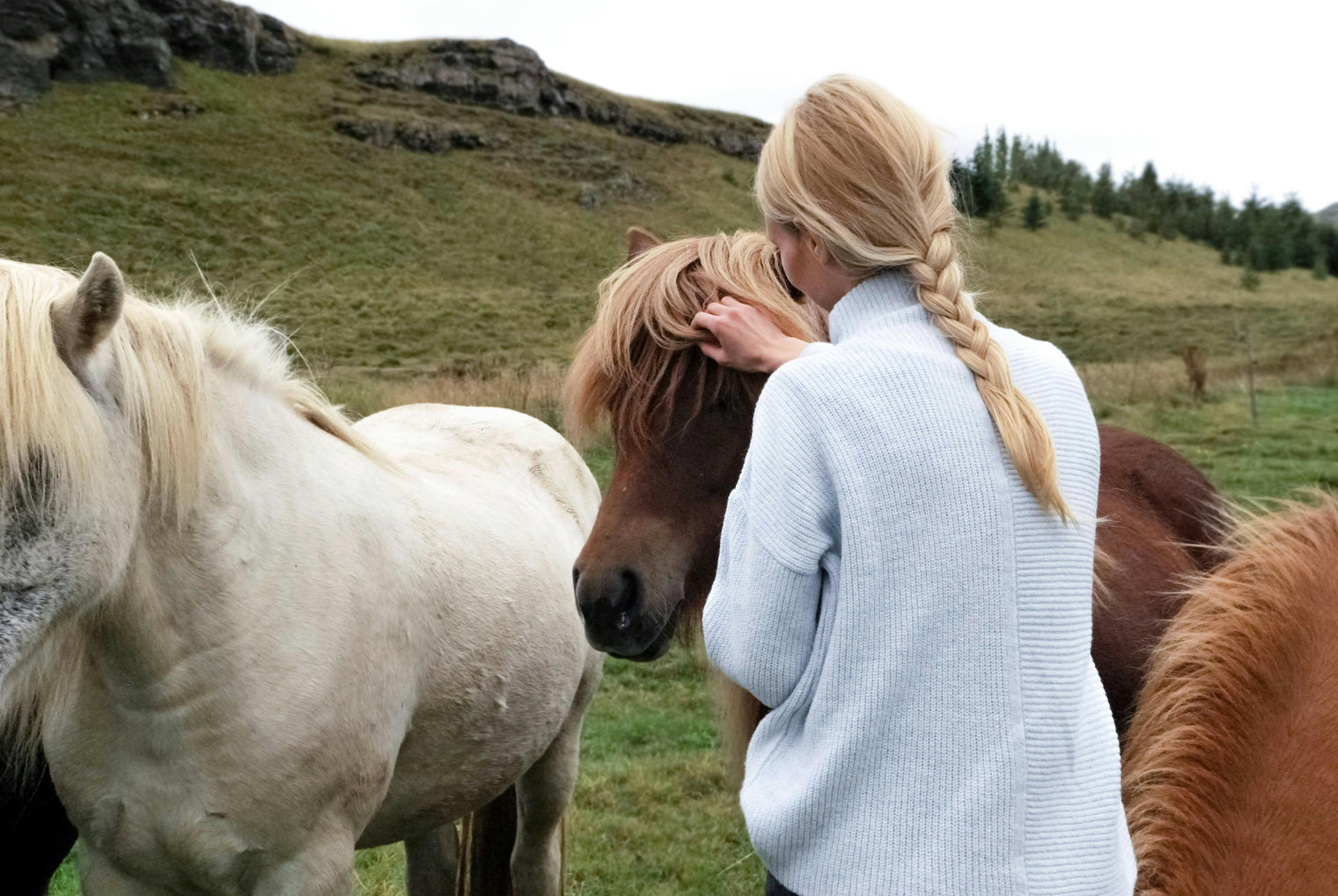When your horse’s gut is happy, everything else tends to fall into place- energy, coat, temperament, even performance.
When your horse’s gut is happy, everything else tends to fall into place- energy, coat, temperament, even performance. When it’s not, you see it (and smell it) fast. This plain-English guide covers the key signs to watch for, the common causes behind them, the red flags that mean “call the vet”, and a simple daily routine that keeps gut health steady year-round.
Quick signs your horse’s gut needs attention
-
Loose or inconsistent droppings (cow-pat one day, dry the next)
-
Dull coat or weight swings despite “same as usual” feeding
-
Girthiness, napping or reluctance under saddle; general grumpiness grooming the belly
-
Gas, bloating, or mild colic history
-
Feed faddiness - going off hard feed or haylage for no clear reason
These don’t automatically equal a medical emergency, but they are early signals that the digestive system is under pressure.
Common causes (and quick stabilisers)
1) Sudden feed or forage changes
Even “better” forage can unsettle hindgut microbes
Quick fix: Transition over 7–10 days; prioritise ad-lib forage and consistency. Soak hay if needed to reduce sugars for sensitive horses.
2) Stress (travel, new yard, box rest, competitions)
Stress hormones affect motility and the microbiome.
Quick fix: More turnout where possible, predictable routines, hay nets for travel, and pre-emptive gut support around known stressors.
3) High starch or too many “extras”
Cereals and frequent treats can tip the balance.
Quick fix: Base calories on forage plus oil/fibre feeds. Split hard feeds into smaller meals.
4) Medications or worming
Some meds and heavy worm burdens upset the balance.
Quick fix: Plan gut support alongside and after courses (speak to your vet), keep to an evidence-based worming plan.
5) Poor hydration
Dehydration slows everything down.
Quick fix: Offer clean water, add a daily electrolyte, and tempt fussy drinkers with soaked beet or a warm “soup” in cold weather.
Vet red flags (don’t wait)
-
Repeated or severe colic signs
-
Persistent fever, or rapid weight loss
-
Black/tarry manure, or blood in droppings
-
Sudden, intense girth pain or marked behaviour change
If you see any of the above, phone your vet first and adjust management later.
The daily gut-balancing routine
Think “forage first, steady schedule, smart support.”
Morning
-
Forage check: Hay/haylage available before hard feed.
-
Hard feed (small): Low-starch, fibre-led base.
-
Gut supplement: Add a proven gut balancer that supports microbial stability and digestion (see Supplement support, below).
-
Electrolytes: Daily, not just on hot days or after work.
Daytime
-
Turnout & movement: Natural trickle-feeding plus gentle movement keeps the gut motile. Hand-graze if full turnout isn’t possible.
-
Water everywhere: Field and stable - clean buckets/troughs.
-
Training & travel: Pre-loading with fibre (chaff/beet) before travel or work can buffer the stomach.
Evening
-
Hard feed (small): Keep meals consistent; avoid piling in late calories.
-
Forage for the night: Enough to bridge the longest stretch.
Weekly rhythm
-
Body condition and droppings diary (two lines in Notes does it).
-
Review workload vs. calories; adjust gradually.
-
Plan ahead for known stressors (clinics, clipping, yard moves) with a gut support “ramp-up” 3–5 days either side.
Supplement support (what to look for)
Choose a gut balancer that does three things well:
-
Stabilises the hindgut with live yeast or pre/probiotics,
-
Supports digestion and nutrient uptake, and
-
Backs overall wellbeing with herbs and antioxidants.
Radiance Gold Original is formulated precisely for this job- combining Actisaf yeast/pre- & probiotics, fenugreek, antioxidants and electrolytes to help balance gut flora, support efficient digestion and everyday resilience. It’s designed to slot into your routine year-round, including around feed changes, travel and competitions.
How to add it to your routine
-
Feed daily (split across meals is fine).
-
Use before/during/after known stress windows (travel, meds, yard moves).
-
Keep it consistent- gut microbes love routine.
Make it effortless: Radiance Gold’s Subscribe & Save gives 10% off + FREE shipping and you can adjust or pause anytime - handy when seasons and workloads change.
Sample 7-day gut balancer plan
Mon–Sun
-
Forage ad-lib; water check a.m./p.m.
-
Small, fibre-first meals twice daily
-
Radiance Gold Original every day
-
Daily electrolytes (particularly for poor drinkers)
-
20-60 mins turnout or in-hand movement if stabled
-
Notes: droppings consistency (1-5), appetite (good/meh/off), behaviour (calm/reactive)
Before travel/clinic: add a fibre feed 60-90 mins pre-load plus don’t skip your gut balancer.
After worming/meds: continue daily support for 1-2 weeks (follow your vet’s guidance).
You don’t need to overhaul everything to improve horse gut health. Keep forage steady, reduce starch, move more, and layer in a daily gut balancer routine that supports the microbiome. Small, consistent actions beat big, sporadic ones every time.
-
Radiance Gold Original - digestion support that fits any yard schedule.
Subscribe & Save: 10% off + FREE shipping, delivered on your schedule.

